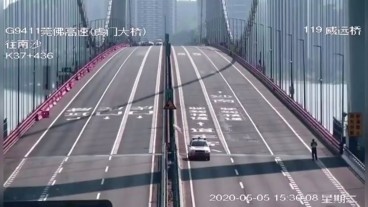"Lecture: Understanding and enhancing the interconnections between human experience and the built environment", part of "The future of Infrastructure today!" webinar series
- Mar, 07, 2025 - Mar, 07, 2025
- Webinar Soft Computing Applications Sustainable Development
- English
- Authored by: thestructuralengineer.info

Lecture date: Friday March 7, 2025, 9:00-10:00AM PST
"The future of Infrastructure today!” is a monthly webinar series under the Auspices of the UC Berkeley Center for Smart Infrastructure (https://smartinfrastructure.berkeley.edu/).
The seventh webinar in the series is titled "Lecture: Understanding and enhancing the interconnections between human experience and the built environment" and is presented by Prof. Carol C. Menassa (PhD, F. ASCE, Professor and John L. Tishman Faculty Scholar, Department of Civil and Environmental Engineering, University of Michigan). A brief description of the webinar follows:
The lack of human-centric built environments can lead to problems such as sick building syndrome, lack of productivity, challenges in navigating unknown spaces and other difficulties that affect people of different abilities. Existing human-in-the-loop methods use intermittent human feedback and lack actionable methods for robust human status evaluation, preference identification and improvement of experience throughout life cycle phases of the built environment. Designing assistive robotic systems that are responsive to human status and needs in the built environment has the potential to solve these problems. In this presentation, I will discuss the work that my group is doing to enable independent mobility in people with physical disabilities (PPD). PPD who rely on wheelchairs in their daily activities, encounter several barriers to mobility in the built environment. A typical end-to-end (E2E) mobility scenario involves navigation (i.e., finding accessible routes) and maneuvering tasks (i.e., parking wheelchair in confined spaces). These scenarios demand substantial effort and pose safety and anxiety risks for PPD adversely affecting their quality of life. Prior research has had limited success in creating user-centered autonomy to enable PPD to independently control their E2E travel needs. My research group’s work on this project has resulted in frameworks that address the fundamental aspects of indoor path-planning, particularly in the context of considering human preferences or physical and social constraints present in the built environment. First, the work develops fundamental rules for creating indoor global and local planner algorithms that enable a shared control navigation platform capable of integrating human preferences in the navigation space. Second, my group has been exploring how brain computer interfaces (BCI) can further enhance the shared control experience in two ways: by allowing individuals to contribute to identifying inaccessible attributes in the built environment during their daily travel and integrate that information into any navigation algorithm; and by developing a BCI that allows PPD to control the speed of their wheelchair in the built environment giving them greater flexibility for hands free navigation.

Want to read more like this?

"Digital Twinning the Built Environment", part of "The future of Infrastructure today!" webinar series
Dec, 20, 2023 | EventLecture date: Friday January 19, 9:00-10:00AM PST "The future of Infrastructure today!” is a monthl...

"Introducing the Berkeley Center for Smart Infrastructure", part of "The future of Infrastructure today!" webinar series
Oct, 13, 2023 | EventLecture date: Friday November 3, 9:00-10:00AM PST The “Future of Infrastructure today!” is a mont...

"Advancing Sustainability in the Geotechnical Industry", part of "The future of Infrastructure today!" webinar series
Feb, 21, 2024 | EventLecture date: Friday March 1, 9:00-10:00AM PST "The future of Infrastructure today!” is a monthly w...

"The Future of Water and the Vision for the CSI", part of "The future of Infrastructure today!" webinar series
Nov, 16, 2023 | EventLecture date: Friday December 15, 9:00-10:00AM PST "The future of Infrastructure today!” is a month...

"SimCenter Tools to Support Natural Hazards Research: From Local to Regional Scale", part of "The future of Infrastructure today!" webinar series
Apr, 01, 2024 | EventLecture date: Friday April 19, 9:00-10:00AM PST "The future of Infrastructure today!” is a monthly...

"DesignSafe: Providing Data and Computational Resources to Advance Research in Natural Hazards Engineering", part of "The future of Infrastructure today!" webinar series
Jun, 06, 2024 | EventLecture date: Friday June 21, 9:00-10:00AM PST "The future of Infrastructure today!” is a monthly w...

2024 World Sustainable Built Environment Conference (WSBE24)
Apr, 01, 2024 | EventThe 2024 World Sustainable Built Environment Conference (WSBE24) will run as an inclusive and net-z...

Concrete “waves” formed at Humen Bridge in China
May, 05, 2020 | NewsOn Tuesday May 5th, the top of the Humen Bridge, Southern China’s suspension bridge, oscillated lik...

Bentley Systems Announces Bentley Infrastructure Cloud Connect
Oct, 15, 2025 | NewsBentley Systems, Incorporated, the infrastructure engineering software company, today announced Ben...
Trending

Keller NextGen Summit

Unlocking Productivity Across the Structural Lifecycle

13th National Conference on Earthquake Engineering (13NCEE)

Structures Congress 2023

